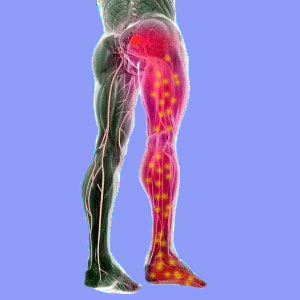
Sciatica conditioning is a major component of both psychosomatic sciatica syndromes and structurally-induced pain conditions alike. Conditioning, also called programming, is directly responsible for influencing the vast majority of symptomatic circumstances reported by patients with a wide range of back and leg pain syndromes. In fact, conditioning is proven to influence almost every aspect of health in our lives and may set patterns which govern many of our body’s natural tendencies towards wellness, sickness and injury without us even realizing that these programmed criteria have been locked-in.
This article topic will describe conditioning and how it can cause pain, worsen pain and extend the duration of pain, as well as prevent recovery from pain in a great number of sciatica sufferers.
Definition of Sciatica Conditioning
Conditioning refers to a physical or psychological response which is generated from a particular set of circumstances. For sciatica patients, conditioning is used to describe how and when the pain comes on, where it affects, how severe it may be and how long it will last. For example, a patient who experiences pain coincidentally when seated might feel that sitting is directly responsible for their symptoms. This can be applied to any activity, position or circumstance. Some of the most common programmed behaviors include pain upon standing too long, sitting, driving or exercising.
However, programming can create a variety of less explainable and sometimes downright illogical patterns as well, such as pain at a particular time of day, pain when dressed in a certain color and pain from eating some foods.
Remember, conditioning is not logical. It is psychological. The reasons why patterns emerge do not have to make sense and they often do not coexist with logical explanations which justify the relationship between circumstance and expression.
Sciatica Conditioning Response
Conditioning occurs every moment of every day in our lives. Programming is part of how we learn, but sometimes we take the process too much to heart and relate all our feelings, and symptoms, to circumstantial occurrence.
Remember that mindbody sciatica is one of the most prevalent types of radiculopathy and conditioning plays a huge role in the development, progression and eventual resolution of symptoms. However, conditioned factors also contribute to the symptomatic expressions of even the most structurally-motivated pain syndromes, potentially escalating or alleviating symptoms based on purely psychosomatic conditioned responses.
There is no way to separate the mind from the body and the influence of one will always hold sway over the other. Pain is a very emotional process and one which is sure to invoke psychological conditioned responses from even the most physically focused patient.
Sciatica Conditioning Consequences
It is important to realize that conditioning is partially or totally influences your pain, regardless of where the symptoms exist or how severe they are. Just by understanding the idea behind programmed responses, you can deny much of their power over you and limit how much havoc they can produce.
Patients who are not in touch with how conditioning works are ravaged at will be these sinister psychoemotional imperatives and rarely find lasting relief from their suffering.
This is why it is often useful to learn about knowledge therapy and how this alternative approach to sciatica treatment will clue you in to the complete picture of your pain: mind and body. There are no risks and you will certainly benefit from the lessons across the entire diversity of your life experience.
Sciatica > Alternative Medicine for Sciatica > Sciatica Conditioning




